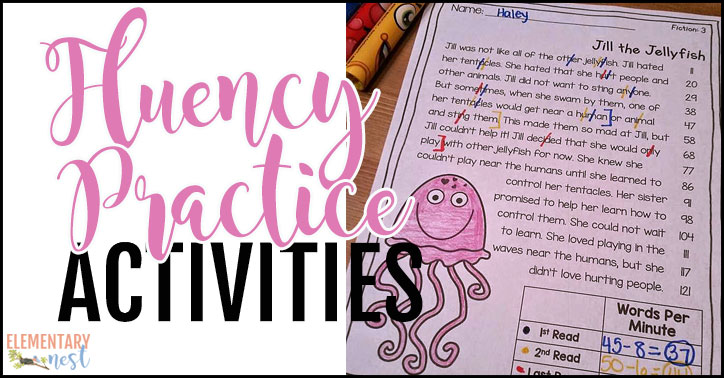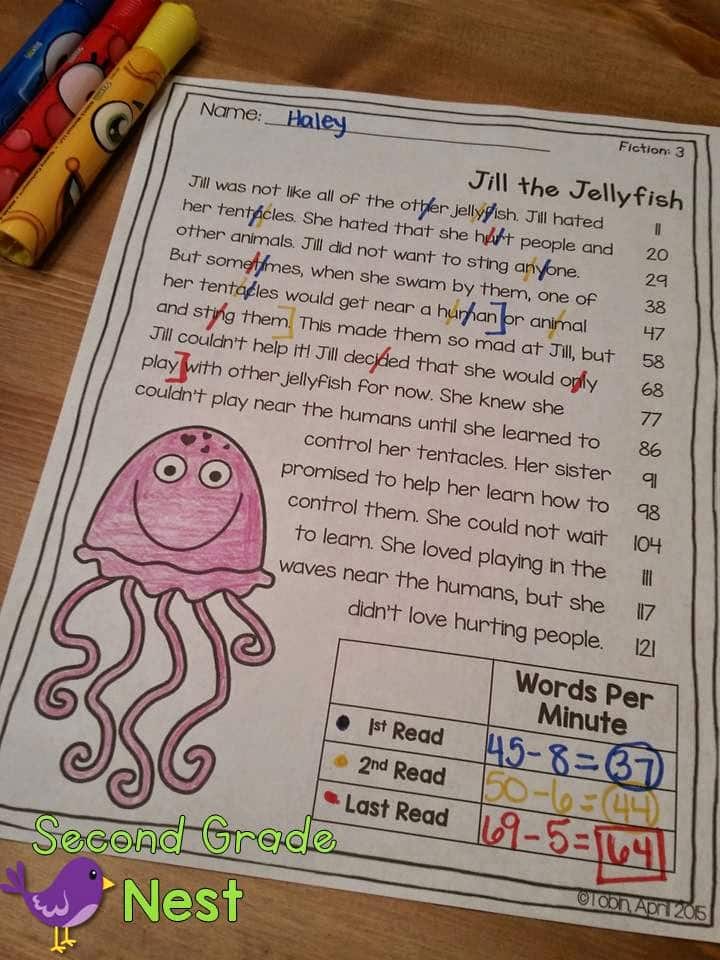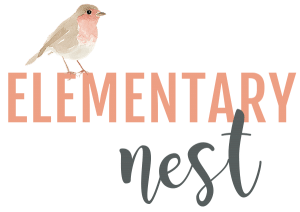
There’s a new addition to my Zoofluency units. I’ve created an ocean set of fluency practice passages! I have enjoyed making these fluency sets so much, that I wanted to extend the passages to include other types of animals. This blog post is going to show you a closer look at all that comes within this fluency set, how to use it, and a FREE set of passages and questions.
A Peek at Ocean Animal Fluency Practice Activities
As with all my Zoofluency sets, this ocean set comes with a binder folder cover. This can be for students to decorate or to keep black & white for teacher data. If you’re going to keep all of the ocean animals fluency practice sets together, it’s a good idea to keep it clearly marked and labeled. You’re also getting a data tracker. There is a page for the fictional passages included and a page for the nonfiction passages included. They come with two columns for each story, one column for the first cold read and another column for the final hot read.
On top of the fluency passages, there are fluency practice centers, too! First, you can see a sentence building activity where students choose subject, verb, and adjective phrase. Then, they will practice reading these sentences aloud. On the right, you see a spin-a-word activity. They will spin the first two letters, then the ending blend to make a word. Throughout the rest of the unit, you have nonsense word practice, sight word practice, and more. This is a great way to incorporate fluency into your daily centers or reading groups to help them practice their reading skills.
How I Score Running Records Fluency Practice

For fluency passages, I always do 3 reads with my kiddos.
- The first read is the cold read because the students have never been exposed to that content before.
- The second read is what my kiddos call the warm read because it’s after their cold read.
- And the final read is the hot read.
The coding strategies that I use are / slashes for errors, circles or “SC” over top of self-corrects, and ] brackets around the final word that a student lands on. I will count up each word that a student reads through on each read. Then, I will subtract the amount of errors. However, self-corrects do not count against their reading score.
If you’re looking for more information on how to correctly fit this into a week of your teaching, check out this blog post.
How to Grab Your Free Fluency Running Record

When you sign up, you’ll be delivered these FREE FLUENCY PASSAGES directly to your email inbox.



















